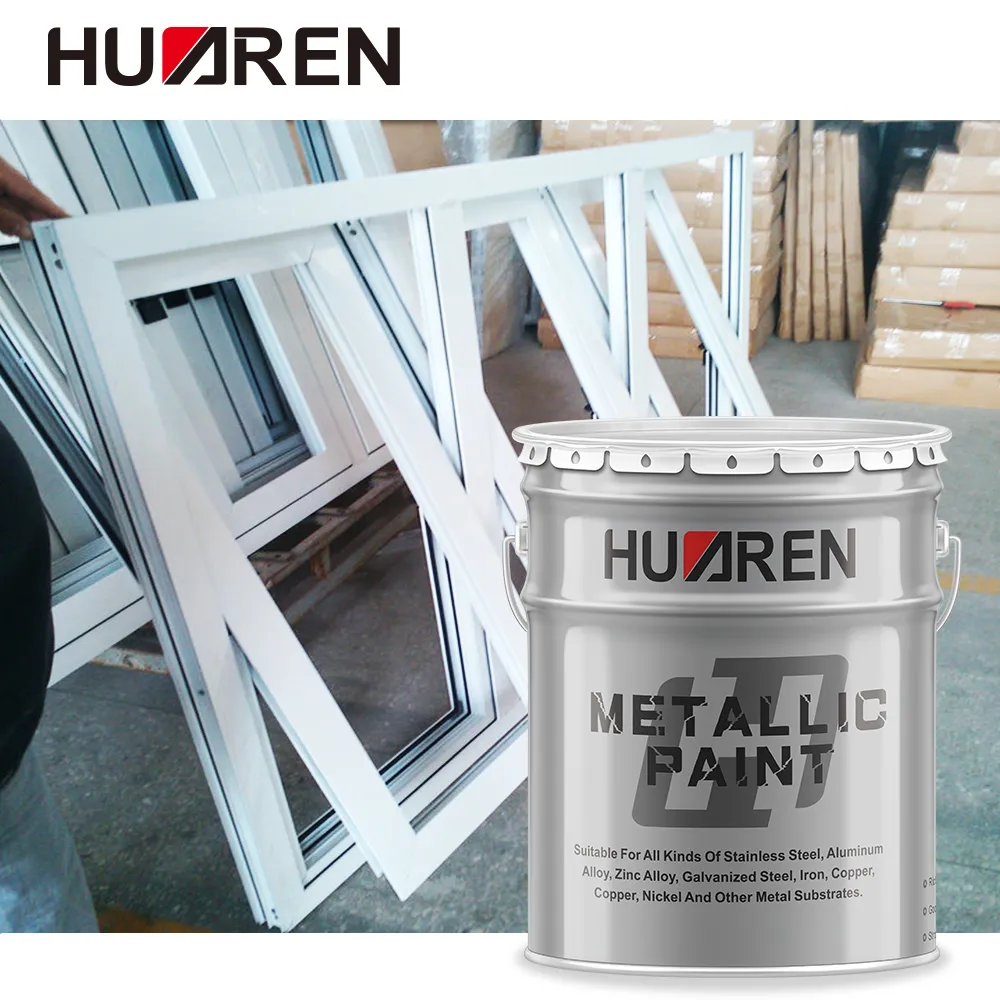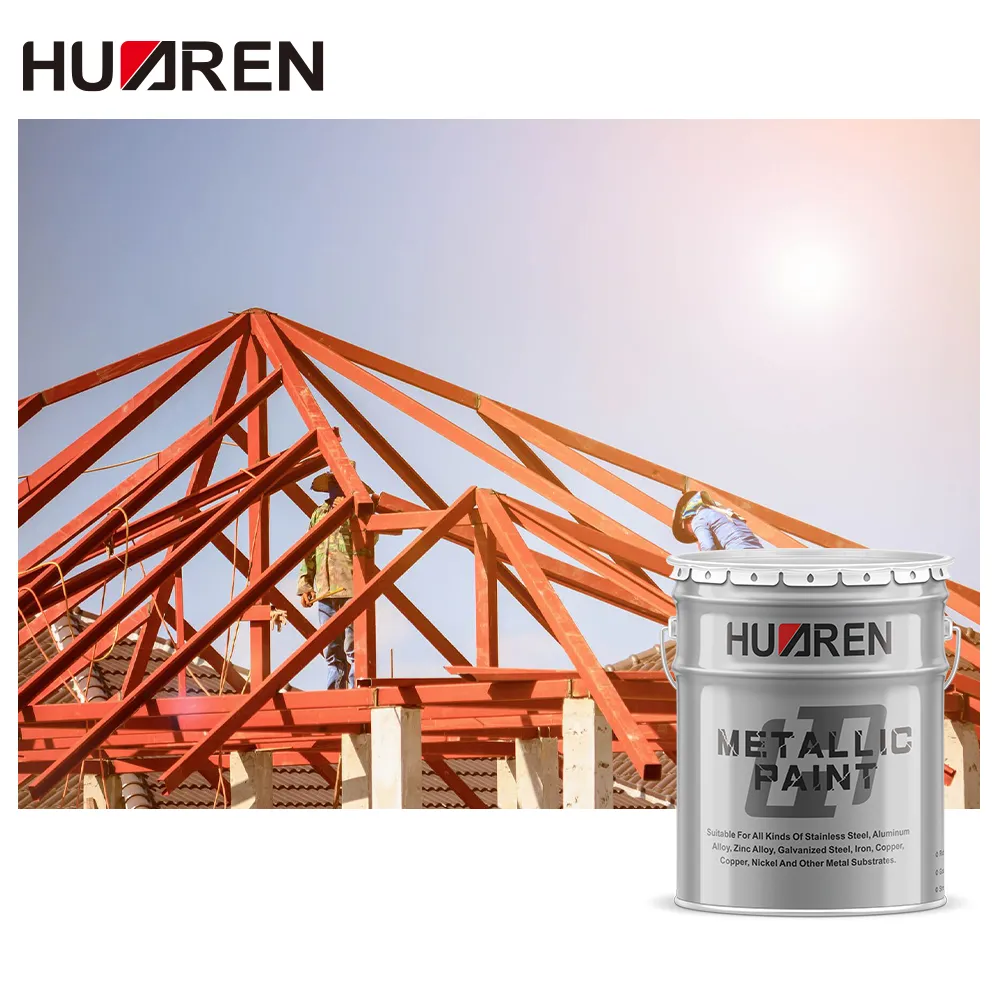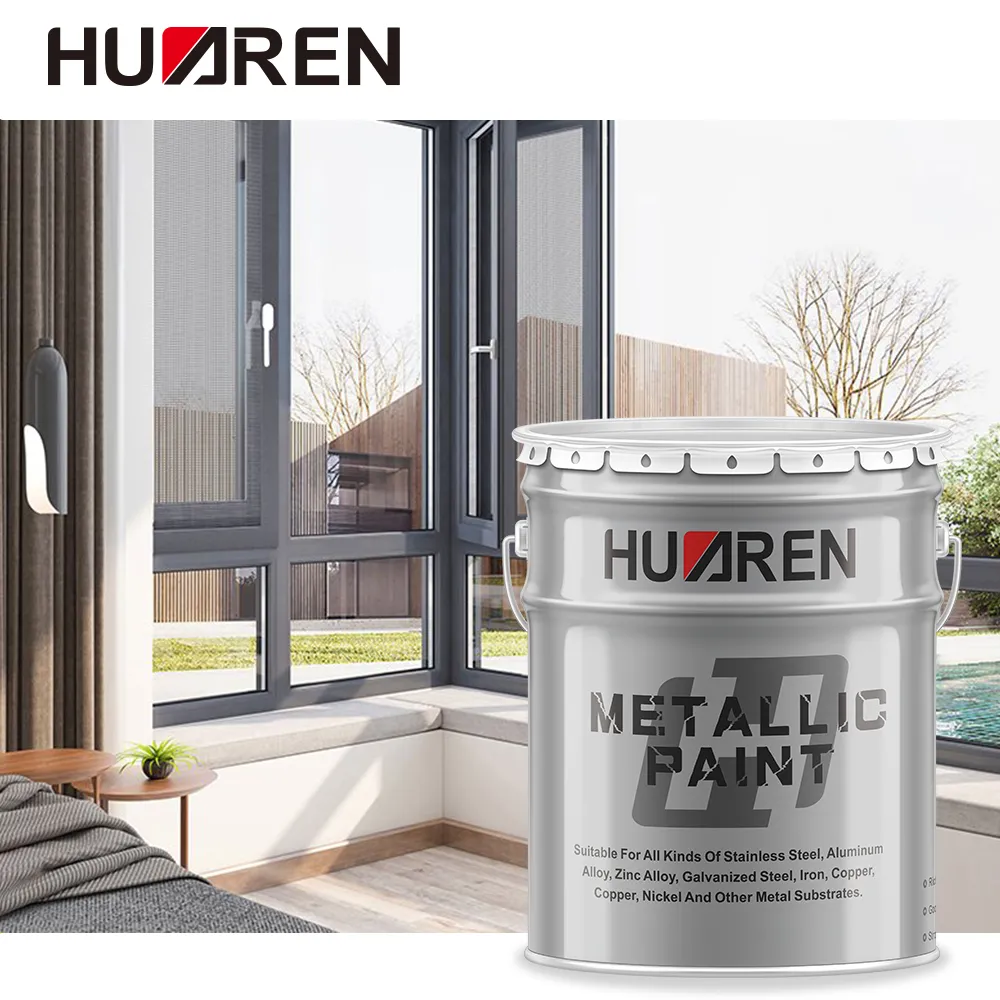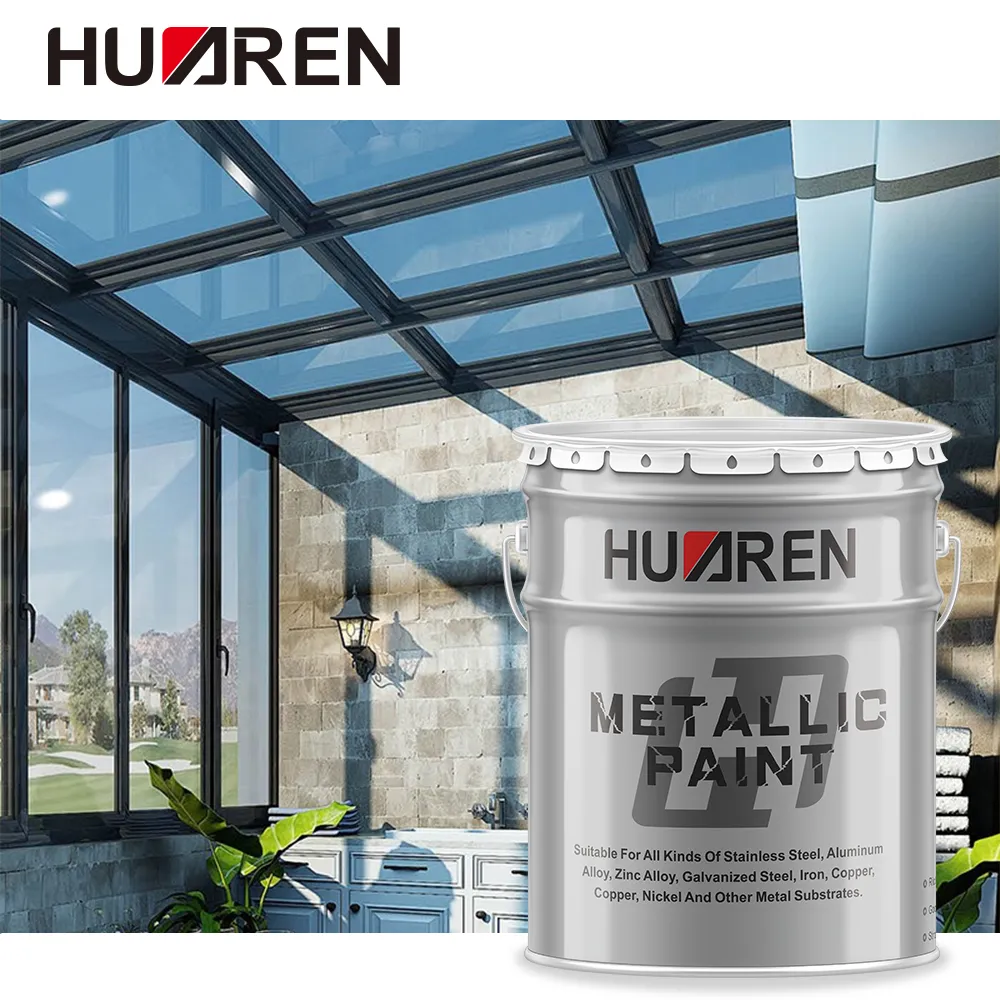As a material widely used in construction, industry and homes, metal's durability and strength make it perform well in a variety of environments. However, even the strongest metal will inevitably rust when exposed to air, moisture and other corrosive substances. Rust not only affects the appearance of the metal, but also weakens its structural strength and causes more serious damage. Therefore, it is crucial to choose the right primer when dealing with rusted metal.
This article will explore the treatment of rusted metal in different situations and analyze several common anti-rust primers to help you make the best choice.

What is the basic principle of rust?
Rust is the result of an electrochemical reaction between metals, especially iron and its alloys, and oxygen and water. This process is called oxidation reaction, which is usually manifested as the formation of reddish-brown iron oxide (Fe2O3) on the metal surface. This layer of oxide will not only flake off, but also further expose the metal surface and accelerate the corrosion process.
What is the effect of rust on metal?
Rust not only affects the appearance of metal, but more importantly, it weakens the structural integrity of the metal. For load-bearing metal structures, such as bridges, building frames, and automobile chassis, rust can lead to reduced strength, which in turn poses a safety hazard. In addition, rust can also cause equipment failures, product scrapping, and other problems, increasing repair and replacement costs.
What are the steps to deal with rusted metal?
Before choosing a primer suitable for rusted metal, the metal surface must first be properly treated. Regardless of the primer selected, the quality of the surface treatment will directly affect the effectiveness and durability of the anti-corrosion coating.
Cleaning Rust
Before applying the primer, the rust on the metal surface must be thoroughly removed. Common cleaning methods include manual grinding, power tool grinding, and sandblasting. For lightly rusted metal, manual grinding and power tool grinding are usually sufficient. For severely rusted metal, sandblasting can effectively remove large areas of rust and old coatings.
Cleaning the surface
After cleaning the rust, there will be dust, oil, and residual chemicals on the metal surface, and these contaminants will affect the adhesion of the primer. Therefore, before applying the primer, the metal surface needs to be thoroughly cleaned with a special cleaner or solvent and the surface must be dry.
Choose the right primer
After cleaning and cleaning the rusty metal surface, you can choose the right primer for painting. The primer not only provides initial anti-rust protection, but also provides good adhesion for the subsequent topcoat.

What are the types of primers commonly used for rusty metals?
The types of primers commonly used for rusty metals are:
1. Zinc-rich primer
2. Epoxy primer
3. Zinc phosphate primer
4. Polyurethane primer
5. Red lead primer
1. Zinc-rich primer
Zinc-rich primer is an anti-rust primer with zinc powder as the main component. It has excellent electrochemical protection due to its high zinc content. Zinc-rich primer protects the substrate through the "sacrificial anode" effect of zinc, that is, zinc undergoes oxidation reaction before iron, thereby protecting the steel substrate from corrosion. Zinc-rich primer is widely used in steel structures such as bridges and marine facilities that are exposed to harsh environments for a long time.
● Advantages of zinc-rich primer: zinc-rich primer has excellent anti-corrosion performance and is particularly suitable for protection in extreme environments.
● Disadvantages of zinc-rich primer: The construction requirements are high, and the metal surface needs to be sandblasted before painting to ensure the adhesion of the primer.
2. Epoxy primer
Epoxy primer is based on epoxy resin and has excellent adhesion and chemical resistance. Compared with zinc-rich primer, epoxy primer not only provides physical shielding, but also forms a strong coating through chemical bonding, effectively preventing the penetration of moisture and oxygen. Epoxy primer is particularly suitable for humid and corrosive environments, and is often used for the protection of ships, storage tanks and underground pipelines.
● Advantages of epoxy primer: strong adhesion, good chemical resistance, suitable for a variety of environments.
● Disadvantages of epoxy primer: not resistant to UV exposure, and needs to be used with topcoat.
3. Zinc phosphate primer
Zinc phosphate primer is a lead-free anti-rust primer that is widely used in the protection of various metal surfaces. Its main component, zinc phosphate, can react chemically with metal to form a dense protective film to block the penetration of corrosive media. This primer is environmentally friendly and suitable for places with high environmental and health requirements.
● Advantages of zinc phosphate primer: environmentally friendly, easy to apply, and wide range of applications.
● Disadvantages of zinc phosphate primer: anti-corrosion performance is not as good as zinc-rich and epoxy primers, suitable for mildly corrosive environments.
4. Polyurethane primer
Polyurethane primer uses polyurethane resin as the main component and has excellent wear resistance and weather resistance. Although its anti-rust effect is not as good as zinc-rich or epoxy primers, polyurethane primers show good durability and decorative properties under outdoor exposure conditions. Polyurethane primers are often used on metal surfaces such as vehicles and mechanical equipment that need to take into account both appearance and protection.
● Advantages of polyurethane primer: wear resistance, weather resistance, suitable for outdoor environments.
● Disadvantages of polyurethane primer: general anti-rust effect, usually used in mild to moderately corrosive environments.
5. Red lead primer
Red lead primer is a traditional anti-rust primer, named after the red lead (lead tetroxide) it contains. Red lead primer forms a passivation film on the metal surface, which can effectively prevent the penetration of moisture and oxygen, thereby preventing rust. However, due to its lead content, it has potential harm to the environment and health, and has now been gradually replaced by environmentally friendly primers.
● Advantages of red lead primer: significant anti-rust effect and strong adhesion.
● Disadvantages of red lead primer: contains lead, which is harmful to the environment and human body, and has been gradually eliminated.

How to choose a suitable anti-rust primer?
Choose according to the degree of rust
When dealing with lightly rusted metals, choose a primer with strong adhesion and easy construction, such as zinc phosphate primer or polyurethane primer. If the metal is already severely rusted, it is recommended to use zinc-rich primer or epoxy primer to ensure the best protection effect.
Choose according to environmental conditions
Environmental conditions are an important consideration when choosing an anti-rust primer. In environments with high humidity, high salt spray or frequent chemical contact, zinc-rich primers and epoxy primers are the best choices. If the metal is exposed to UV rays for a long time, polyurethane primers are more suitable due to their excellent weather resistance.
Selection based on construction conditions
The restrictions of construction conditions will also affect the choice of primer. Some primers have high requirements for the construction environment, such as zinc-rich primers need to be sprayed in a humidity-free environment, while zinc phosphate primers and polyurethane primers have relatively loose requirements for construction conditions. When the site conditions are not ideal, primers that are easy to apply and have strong tolerance will be more practical.
What are the precautions for rusty metal protection?
The importance of surface treatment
In anti-rust coating, the importance of surface treatment cannot be ignored. No matter how high-quality the primer is, improper surface treatment will lead to poor adhesion of the coating, which will affect the anti-corrosion effect. It is recommended to at least perform manual grinding or power tool grinding before applying the primer, and use sandblasting as much as possible to achieve the best surface cleanliness.
Construction temperature and humidity
When applying primer, the construction temperature and humidity will also affect the effect of the coating. Generally speaking, the construction temperature should be controlled between 10℃ and 30℃, and the humidity should not exceed 85%. Under low temperature and high humidity conditions, the drying time of the primer will be prolonged, and even problems such as whitening and loss of gloss of the coating may occur. Therefore, the construction time should be reasonably arranged according to environmental conditions.
Matching of primer and topcoat
The primer mainly plays the role of rust prevention and adhesion enhancement, but its decorative and weather resistance are usually poor, so it needs to be used in conjunction with a suitable topcoat. The choice of topcoat should consider the chemical compatibility of the primer and the actual use environment to ensure the durability and beauty of the overall coating system.

Does Huaren Chemical offer discounts for bulk purchases?
Yes, Huaren Chemical Industry Co., Ltd. offers significant discounts for bulk purchases of industrial paints and coatings. Whether you're buying epoxy, floor coatings, or phenolic paints, we provide cost-effective solutions for both small and large orders. Contact us for more details on our wholesale pricing and promotions available to long-term clients.

